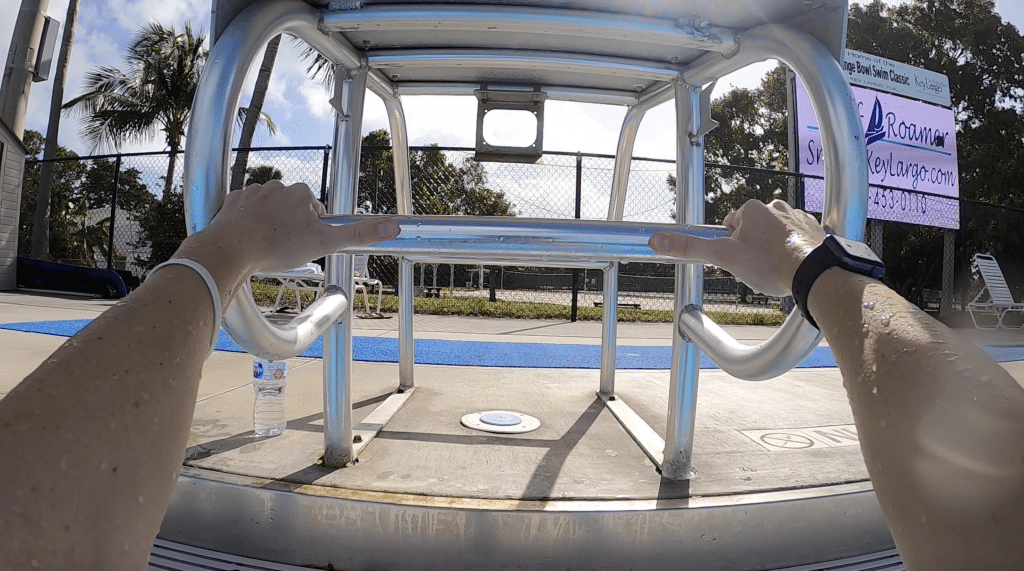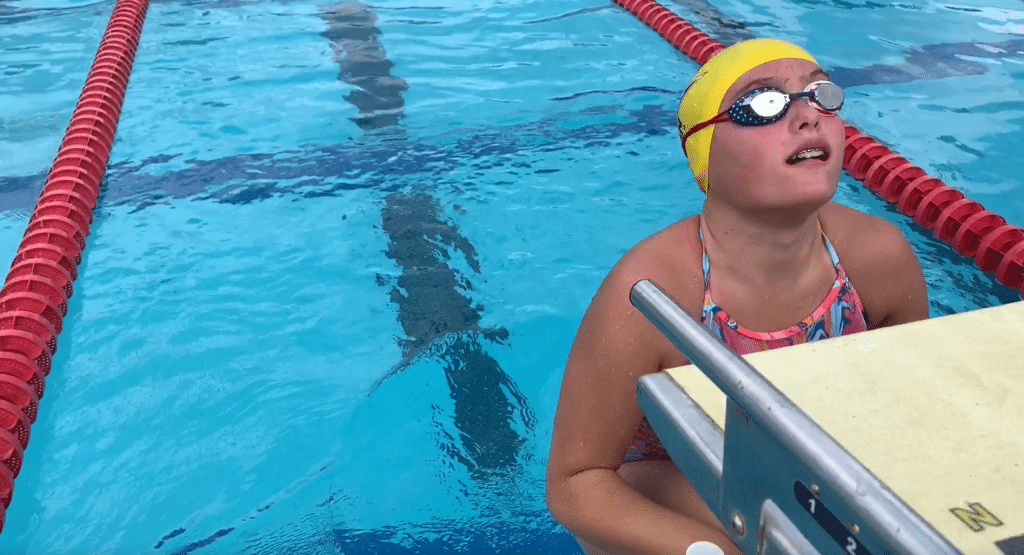Welcome Back to our NEW series on Backstroke starts! This is a subject we’ve never hit on on the SLAF blog, so we are really excited to hone in on the Backstroke Start for all those Backstrokers out there!
Let’s Get Started
A Backstroke Start, just like a regular start, is the FASTEST point of any Backstroke race. In order to achieve your fastest speed possible with a Backstroke start, you need to learn to perfect your Backstroke Starts. Here are five tips to help you teach the PERFECT Backstroke Start!
1.) Improve Your Setup
Improving your setup on the wall is a BIG component to making sure you can actively PUSH yourself against the wall and THROW your hands at the same time to get into that nice rainbow 🌈 in the air.
To have a great setup, a swimmer must keep their hands outside their knees. I actually prefer a swimmer to have their arms as far wide (on the Backstroke bar as possible), so there is a lot of space for them to put up their legs between their elbows. See the image below:

At the same time, the body should be in a very, deep squat position with a space between the bum and their heels. See video below:
If a swimmer has the ability to use a Backstroke wedge, they would place the ball of their foot on the wedge – but if they do not, they would just put their feet on the wall. You may have noticed in my video above we work on Backstroke starts with our toes above the gutter, as our wall is slippery – but obviously we know this is a DQ if done in a race 🙂
So as far as feet placement not he wall is concerned, you want swimmers to have heels NO LOWER than their bum on the wall! We want to see a diagonal angle from their knee caps to their feet! Without securing the proper foot position on the wall, you could slip on your start. This is no fun for anyone and leads to a really SLOW speed on entry!
Reminds me of when Elizabeth Beisel slipped at 2014 Nationals and the whole crowd went, “Ooooo” but she somehow managed to come back and get 6th in the race!
2.) Keep the Head in Line!
The next part of the Backstroke Start is ACTUALLY taking your mark! It’s important that swimmers keep their head in LINE with their back when they raise up to the wall and bend the elbows. See picture of what NOT TO DO below:

As far as HOW MUCH swimmers should raise their body up while ‘Taking their Mark’, I use the elbows as the gauge here. I look for normally a 90-degree bend in the elbows when taking their mark. So let the elbows comes to 90-degrees and however high that brings the body up, perfect!
Let us HELP YOU with your Backstroke Start!

By signing up for one of our video analysis packages, we can hone in on EXACTLY what you need to do to PERFECT your Backstroke Start. The power of video is literally unmatched, so give yourself an early Christmas or Holiday present today!
3.) Work the Hip Extension
Coaches and Swimmers need to spend time working the EXPLOSIVE hip motion that happens as soon as you press your feet against the wall! If you don’t work on a quick hip extension, followed by an amazing back extension – swimmers will never achieve that nice rainbow above the water. In part II of this blog series, we will give you some drills to specifically work on this part of the movement to get you a PERFECT Backstroke start!
4.) Securing the Streamline
This is another huge component of a great Backstroke start is getting a swimmer used to how QUICKLY they need to throw their hands into a streamline and secure them with a lock. Working this specific piece of a Backstroke start will help a swimmer get their hands into a streamline QUICKER, so they can achieve that high speed on entry!
5.) Throwing the Head Back
The correct timing of a Backstroke start is imperative to the start itself. The steps happen with head throws first, knee drive second, arm throw third, and hip extension fourth. If swimmers do not work throwing their head back and opening the space between their chin and chest, they will not hit that beautiful rainbow position!
Perfect Backstroke Starts
Teaching a PERFECT Backstroke start is A LOT harder than it sounds. Hopefully this checklist makes it easier to work on the 5 individual steps needed for a great start and you can circle back to whatever step you need to work on.
Be sure to stay tuned for next week’s post on Backstroke Starting Drills.
Until Next Time,
Abbie Fish

3 Responses